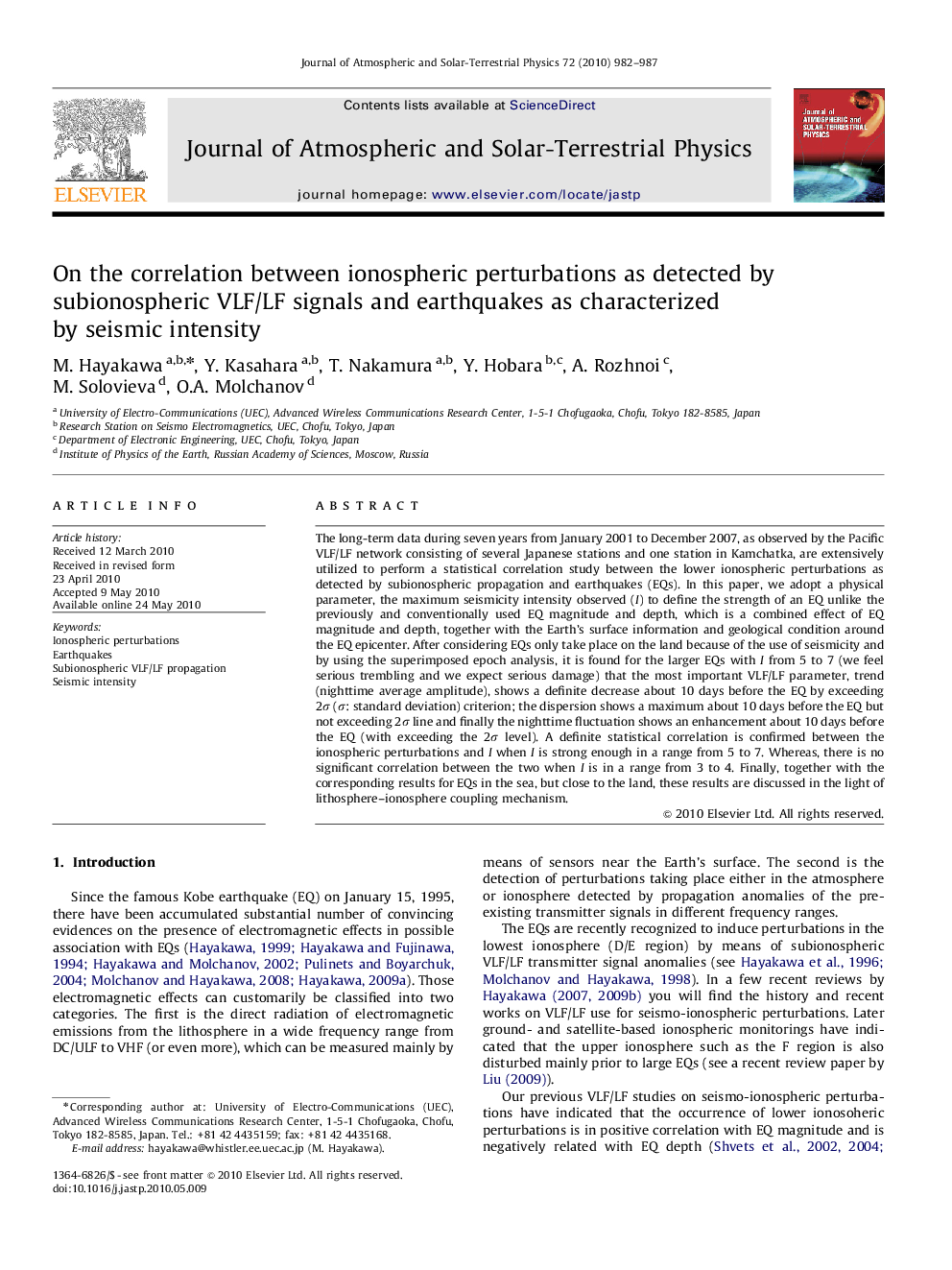| Article ID | Journal | Published Year | Pages | File Type |
|---|---|---|---|---|
| 1777233 | Journal of Atmospheric and Solar-Terrestrial Physics | 2010 | 6 Pages |
The long-term data during seven years from January 2001 to December 2007, as observed by the Pacific VLF/LF network consisting of several Japanese stations and one station in Kamchatka, are extensively utilized to perform a statistical correlation study between the lower ionospheric perturbations as detected by subionospheric propagation and earthquakes (EQs). In this paper, we adopt a physical parameter, the maximum seismicity intensity observed (I) to define the strength of an EQ unlike the previously and conventionally used EQ magnitude and depth, which is a combined effect of EQ magnitude and depth, together with the Earth’s surface information and geological condition around the EQ epicenter. After considering EQs only take place on the land because of the use of seismicity and by using the superimposed epoch analysis, it is found for the larger EQs with I from 5 to 7 (we feel serious trembling and we expect serious damage) that the most important VLF/LF parameter, trend (nighttime average amplitude), shows a definite decrease about 10 days before the EQ by exceeding 2σ (σ: standard deviation) criterion; the dispersion shows a maximum about 10 days before the EQ but not exceeding 2σ line and finally the nighttime fluctuation shows an enhancement about 10 days before the EQ (with exceeding the 2σ level). A definite statistical correlation is confirmed between the ionospheric perturbations and I when I is strong enough in a range from 5 to 7. Whereas, there is no significant correlation between the two when I is in a range from 3 to 4. Finally, together with the corresponding results for EQs in the sea, but close to the land, these results are discussed in the light of lithosphere–ionosphere coupling mechanism.
